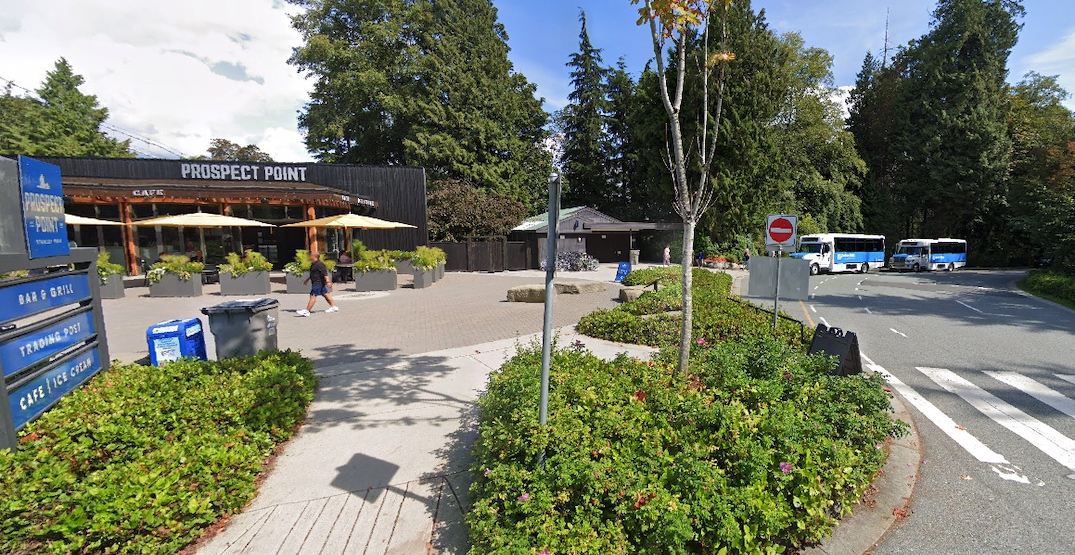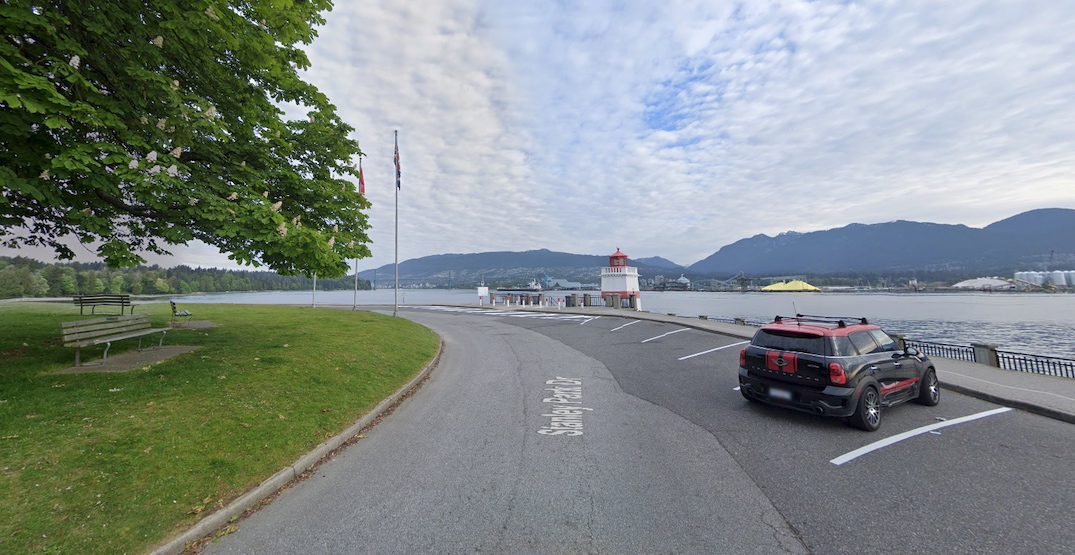Park Board preparing to reopen Stanley Park to all cars on Monday

All vehicles will be able to enter Stanley Park’s local roads by Monday, June 22, following a decision by Vancouver Park Board commissioners on Thursday night to implement a new temporary road system on Stanley Park Drive that converts one traffic lane for vehicles and one traffic lane for cyclists.
This also means cyclists will continue to be banned from the park’s seawall, with this space used by pedestrians only.
Commissioners had convened to deliberate on a motion to revert Stanley Park to its pre-COVID-19 road system before this weekend, with both lanes reopened to vehicles and cyclists returning to the seawall. Cars have been banned from the park’s local roads since April 8.
But after hearing from about 80 of the 116 registered public speakers, the matter later turned into a debate over an amended motion to proceed with the previous plan announced by Park Board staff last week. The amended motion was approved in a 5-2 vote, with NPA commissioners Tricia Barker and John Coupar opposed.
- See also:
The vast majority of the speakers that were able to make their address to the Park Board sided with Barker and Coupar’s request to fully reopen the roadways to vehicles, with many asserting families, seniors, and people with disabilities across the region require car access to be able to reach Stanley Park.
Others took issue with the perceived lack of consultation, the financial impact on both the Park Board and businesses within the park that rely on vehicles for their clientele, and the potential for traffic congestion with one lane for vehicles.
Coupar said Park Board staff have developed a plan to reduce the number of parking stalls by about 30%, with Stanley Park Drive lined with orange traffic delineators to mark the separation of bike and vehicle traffic. Pay parking in Stanley Park typically generates about $4 million in revenue for the Park Board annually, which directly supports the maintenance costs of the 1,000-acre park.
“I believe the cost is money we don’t need to spend. I believe we should be doing everything we can to help our business partners like the City of Vancouver, like their backflips for adding patios, relaxing regulations, and doing everything they can to ensure the successes of our small businesses. We should be doing that for our partners in the park,” said Coupar, noting that the Park Board received legal action notices from park businesses prior to the meeting.
“I’m concerned what it will look like, with miles and miles of plastic barriers in Stanley Park. I think that will dramatically change the look and experience of the park. The other thing I’m very much concerned about, I’ve heard many times tonight that this is a temporary plan, but I’m not aware of any temporary bike lane in Vancouver that has remained temporary.”

Prospect Point Bar & Grill at Stanley Park. (Google Maps)
Nancy Stibbard, who owns and operates the Capilano Group’s Prospect Point Bar & Grill and Stanley Park Pavilion, says there will be a bike lane going through the Prospect Point parking lot, based on the drawings shown to her by Park Board staff last week.
She secured a 25-year lease for the attractions five years ago from the Park Board, and has spent millions of dollars in improvements, particularly the rebuild of the Prospect Point Bar & Grill.
“I have invested a great deal of money, particularly in Prospect Point because it is a famous view point in Stanley Park and in Vancouver,” said Stibbard.
“I also invested in them because there is a roadway around Stanley Park with two lanes, plus a parking lot for 50 cars and more along the roadway.”
Ted Lee, the acting president and CEO of Tourism Vancouver, also spoke in favour of returning the park to its normal road system, with industry surveys indicating 69% of British Columbians are intending to use a car or RV for non-essential travel this summer.
He suggested attractions within the park will see a greater dependence on vehicles, and the local tourism industry needs the park’s accessibility for out-of-region travellers retained as a key tourism asset in the region.
With the absence of international tourists, especially cruise ships, “it is also our hope that domestic travel will give businesses a small chance to hang on and survive this pandemic, until travel can return to some normalcy,” said Lee.
According to Green Party commissioner Dave Demers, Park Board staff estimate visitation within Stanley Park is up by 50% since May 1, and they have counted 350,000 cyclists over the last 67-day period.
However, it is also important to note that increased visitation during COVID-19 is far from being a phenomenon unique to Stanley Park. Park Board staff previously stated citywide park visitation has increased by up to 60% during the pandemic period, and Metro Vancouver Regional District’s latest statistics show there was a 61% increase in monthly visitation to regional parks in May. As well, across the city, leisure cycling rates have doubled compared to the previous year.
Demers added that over the same period in 2019, there were about 60,000 vehicles in Stanley Park, which is a figure that includes high-occupancy cars and tour buses. It is also believed about a quarter of this traffic uses the park’s local roads as an alternative route to the Stanley Park Causeway.
He pressed on commissioners to make a decision before the end of the meeting to avoid delaying next week’s reopening of Stanley Park to cars.
“I’m not saying it is a perfect [temporary transportation] plan, but it is probably as good of a plan as it will get. Staff confirmed that the conversation is ongoing [with park stakeholders and businesses] and there are details to iron out,” added Demers, who says the interventions will cost $200,000, with half covered by the Park Board’s capital plan and the other half from a provincial government grant.

Brockton Point Lighthouse at Stanley Park. (Google Maps)
Green Party commissioner and board chair Camil Dumont spoke on the need to compromise to achieve a balance with the diverse mobility needs of Stanley Park in the context of the pandemic.
“I think with the accessibility issue, we need to make sure there are no barriers for people to get to the park. Right now with traffic completely closed, there are plenty of people who need access to the park and can’t get there… I think we should all agree that there should be no barriers for people to get into the park,” said Dumont.
“We need to return vehicle traffic to the park. The park is designed based on cars going through it, that needs to happen. We also need to ensure we keep options open for physical distancing, and this is the core motive for the work that is happening.”
Green Party commissioner Stuart Mackinnon said he does not believe anyone will be denied access once the new temporary road system is in place, and hopes this will allow park businesses and attractions to reopen. But he focused his attention on the shared use of Stanley Park Drive as a continued and expanded pandemic response measure.
“We are in a pandemic. We know from past pandemics there will be a second wave, but we don’t know how big it will be,” said Mackinnon.
“I think this is a very prudent way to start reopening the park. We are not in a situation where we can start going into pre-pandemic opportunities. We are in a pandemic, this has not changed. We need to be careful. We need to make sure we help our community stay safe and healthy.”
Last week’s meeting concluded with commissioners approving a feasibility study on permanently reducing vehicle traffic in Stanley Park over the longer term.
There will be another Park Board meeting on Monday to discuss the plan to gradually reopen park facilities and services.

